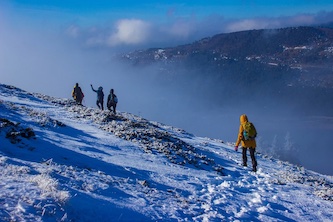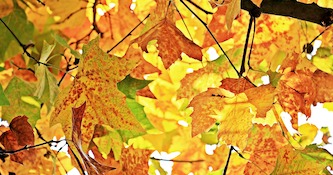A recent car crash in Canada turned into an amazing fireworks show. It happened in British Columbia when a truck carrying fireworks crashed into a pickup truck. The impact caused the fireworks to go off, creating a dazzling display of lights and explosions that lasted for an hour. Luckily, nobody got seriously hurt, but the vehicles were damaged and the motorway had to be closed for a while.
Lots of people stopped their cars and gathered on the side of the road to watch the incredible show. Videos and pictures of the accident quickly spread on social media, showing just how extraordinary it was. The authorities are investigating what caused the crash and who might be responsible. This accident reminds us that unexpected and amazing things can happen on the road, so it’s important to always be careful and alert while driving.
Original news source: Car crash leads to fireworks show on Canadian motorway (BBC)
Listen
Slow
Normal
Fast
Group or Classroom Activities
Warm-up Activities:
– News Summary
Instructions:
1. Divide the class into pairs or small groups.
2. Give each group a copy of the article.
3. Instruct the groups to read the article and summarize the main points in a few sentences.
4. After a few minutes, have each group share their summaries with the rest of the class.
5. Encourage discussion and ask follow-up questions to check comprehension.
– Opinion Poll
Instructions:
1. Divide the class into pairs or small groups.
2. Ask each group to come up with a list of questions related to the article, such as “Do you think the crash was caused by human error or mechanical failure?” or “Should fireworks be transported on public roads?”
3. Give each group a few minutes to discuss and write down their questions.
4. Have each group take turns asking their questions to the rest of the class.
5. Encourage open discussion and allow students to express their opinions.
– Word Association
Instructions:
1. Write the word “crash” on the board.
2. Ask the class to brainstorm as many words or phrases related to the article as possible in a set amount of time (e.g. 3 minutes).
3. Encourage students to think creatively and make connections between different words.
4. After the time is up, go around the class and have each student or group share one word or phrase from their list.
5. Write the words on the board and discuss their meanings and connections to the article.
– Sketch It
Instructions:
1. Divide the class into pairs or small groups.
2. Instruct each group to choose a scene or moment from the article and sketch it on a piece of paper.
3. Give the groups a few minutes to complete their sketches.
4. Have each group present their sketch to the rest of the class and explain why they chose that particular scene.
5. Encourage discussion and ask follow-up questions about the article as students present their sketches.
– Pros and Cons
Instructions:
1. Divide the class into two groups – one group representing the “pros” and the other representing the “cons”.
2. Instruct each group to come up with arguments and reasons to support their side of the following statement: “Transporting fireworks on public roads should/should not be allowed.”
3. Give the groups a few minutes to brainstorm and write down their arguments.
4. Have each group take turns presenting their arguments to the rest of the class.
5. Encourage respectful debate and discussion, allowing students to respond to each other’s points.
Comprehension Questions:
1. What caused the fireworks to go off in the car crash in Canada?
2. How long did the dazzling display of lights and explosions last?
3. Were there any serious injuries from the accident?
4. What happened to the vehicles involved in the crash?
5. Why did lots of people stop their cars and gather on the side of the road?
6. How did videos and pictures of the accident spread quickly?
7. What are the authorities doing to find out what caused the crash?
8. What is the lesson we can learn from this accident?
Go to answers ⇩
Listen and Fill in the Gaps:
A recent car crash in Canada (1)______ into an amazing (2)______ show. It happened in (3)______ Columbia when a truck carrying fireworks crashed into a (4)______ truck. The impact caused the fireworks to go off, creating a (5)______ display of lights and explosions that lasted for an hour. Luckily, nobody got seriously hurt, but the vehicles were damaged and the (6)______ had to be (7)______ for a while.
Lots of (8)______ stopped their cars and (9)______ on the side of the road to (10)______ the incredible show. Videos and pictures of the (11)______ quickly spread on social media, showing just how (12)______ it was. The authorities are investigating what (13)______ the (14)______ and who might be responsible. This accident reminds us that (15)______ and (16)______ things can happen on the road, so it’s important to always be careful and alert while driving.
Go to answers ⇩
Discussion Questions:
Students can ask a partner these questions, or discuss them as a group.
1. Have you ever seen a fireworks show? How did it make you feel?
2. What do you think caused the car crash in the article? Why?
3. How would you feel if you were driving and suddenly saw fireworks exploding in front of you?
4. Do you think the people who stopped to watch the fireworks were being responsible? Why or why not?
5. Have you ever witnessed an unexpected event while driving? What happened?
6. Do you think it’s important to always be careful and alert while driving? Why or why not?
7. What would you do if you were driving and saw a car crash in front of you?
8. Have you ever had a close call or a near accident while driving? How did it make you feel?
9. What do you think the drivers of the crashed vehicles were thinking when the fireworks started going off?
10. How do you think the people involved in the car crash felt after the accident was over?
11. What safety precautions do you take while driving? Why are they important?
12. Do you think accidents like this can be prevented? Why or why not?
13. Have you ever shared a video or picture of an unusual event on social media? What was it?
14. How do you think the people who were watching the fireworks felt after the show was over?
15. What is the most surprising thing you have ever seen while driving? How did it make you feel?
Individual Activities
Vocabulary Meanings:
Match each word to its meaning.
Words:
1. car
2. crash
3. fireworks
4. display
5. accident
6. investigate
7. responsible
8. road
Meanings:
(a) To examine and find out the cause of something
(b) An unexpected event that causes damage or injury
(c) Something you drive
(d) When two vehicles hit each other
(e) The person who is to blame for something
(f) Explosive devices that create colorful lights and sounds
(g) A show or exhibition
(h) The surface that vehicles drive on
Go to answers ⇩
Multiple Choice Questions:
1. What caused the fireworks show in Canada?
(a) A lightning storm
(b) A concert
(c) A celebration of a holiday
(d) A car crash involving a truck carrying fireworks
2. How long did the fireworks display last?
(a) An hour
(b) A few minutes
(c) All night
(d) Only a few seconds
3. What happened to the vehicles involved in the crash?
(a) They were completely destroyed
(b) They were damaged
(c) They were unharmed
(d) They disappeared
4. Why did the motorway have to be closed?
(a) For construction work
(b) To allow the fireworks show to continue
(c) Due to the accident
(d) To prevent traffic congestion
5. What did people do when they saw the fireworks show?
(a) They continued driving
(b) They stopped their cars and watched
(c) They called the police
(d) They ignored it and kept going
6. How did videos and pictures of the accident spread?
(a) On social media
(b) On the news
(c) Through text messages
(d) By word of mouth
7. What are the authorities doing?
(a) Ignoring the accident
(b) Celebrating the fireworks show
(c) Closing down the motorway permanently
(d) Investigating the cause of the crash and who is responsible
8. What lesson does the article remind us of?
(a) To never watch fireworks displays
(b) To avoid driving on motorways
(c) To always be careful and alert while driving
(d) To crash into trucks carrying fireworks for fun
Go to answers ⇩
True or False Questions:
1. The accident happened in British Columbia when a truck carrying fireworks collided with a pickup truck.
2. A car crash in Canada turned into a spectacular fireworks display.
3. Many people stopped their cars and gathered on the side of the road to witness the incredible display.
4. Videos and pictures of the accident quickly spread on social media, showcasing the extraordinary event.
5. The motorway had to be permanently closed due to the crash.
6. Unfortunately, everybody was seriously injured in the accident, and the vehicles involved were unharmed.
7. Authorities are currently disregarding the cause of the crash and absolving the parties involved.
8. The impact of the crash did not set off the fireworks, resulting in a dull and uneventful spectacle.
Go to answers ⇩
Write a Summary:
Write a summary of this news article in two sentences.
Writing Questions:
Answer the following questions. Write as much as you can for each answer.
1. What happened in British Columbia that turned into an amazing fireworks show?
2. How long did the display of lights and explosions last?
3. Were there any serious injuries as a result of the car crash?
4. What did people do when they saw the fireworks show?
5. Why is it important to be careful and alert while driving, according to the article?
Answers
Comprehension Question Answers:
1. What caused the fireworks to go off in the car crash in Canada?
The fireworks went off because a truck carrying them crashed into a pickup truck.
2. How long did the dazzling display of lights and explosions last?
The display of lights and explosions lasted for an hour.
3. Were there any serious injuries from the accident?
Luckily, nobody got seriously hurt in the accident.
4. What happened to the vehicles involved in the crash?
The vehicles involved in the crash were damaged.
5. Why did lots of people stop their cars and gather on the side of the road?
Lots of people stopped their cars and gathered on the side of the road to watch the incredible show of lights and explosions.
6. How did videos and pictures of the accident spread quickly?
Videos and pictures of the accident spread quickly on social media.
7. What are the authorities doing to find out what caused the crash?
The authorities are investigating what caused the crash and who might be responsible.
8. What is the lesson we can learn from this accident?
The lesson we can learn from this accident is that unexpected and amazing things can happen on the road, so it’s important to always be careful and alert while driving.
Go back to questions ⇧
Listen and Fill in the Gaps Answers:
(1) turned
(2) fireworks
(3) British
(4) pickup
(5) dazzling
(6) motorway
(7) closed
(8) people
(9) gathered
(10) watch
(11) accident
(12) extraordinary
(13) caused
(14) crash
(15) unexpected
(16) amazing
Go back to questions ⇧
Vocabulary Meanings Answers:
1. car
Answer: (c) Something you drive
2. crash
Answer: (d) When two vehicles hit each other
3. fireworks
Answer: (f) Explosive devices that create colorful lights and sounds
4. display
Answer: (g) A show or exhibition
5. accident
Answer: (b) An unexpected event that causes damage or injury
6. investigate
Answer: (a) To examine and find out the cause of something
7. responsible
Answer: (e) The person who is to blame for something
8. road
Answer: (h) The surface that vehicles drive on
Go back to questions ⇧
Multiple Choice Answers:
1. What caused the fireworks show in Canada?
Answer: (d) A car crash involving a truck carrying fireworks
2. How long did the fireworks display last?
Answer: (a) An hour
3. What happened to the vehicles involved in the crash?
Answer: (b) They were damaged
4. Why did the motorway have to be closed?
Answer: (c) Due to the accident
5. What did people do when they saw the fireworks show?
Answer: (b) They stopped their cars and watched
6. How did videos and pictures of the accident spread?
Answer: (a) On social media
7. What are the authorities doing?
Answer: (d) Investigating the cause of the crash and who is responsible
8. What lesson does the article remind us of?
Answer: (c) To always be careful and alert while driving
Go back to questions ⇧
True or False Answers:
1. The accident happened in British Columbia when a truck carrying fireworks collided with a pickup truck. (Answer: True)
2. A car crash in Canada turned into a spectacular fireworks display. (Answer: True)
3. Many people stopped their cars and gathered on the side of the road to witness the incredible display. (Answer: True)
4. Videos and pictures of the accident quickly spread on social media, showcasing the extraordinary event. (Answer: True)
5. The motorway had to be permanently closed due to the crash. (Answer: False)
6. Unfortunately, everybody was seriously injured in the accident, and the vehicles involved were unharmed. (Answer: False)
7. Authorities are currently disregarding the cause of the crash and absolving the parties involved. (Answer: False)
8. The impact of the crash did not set off the fireworks, resulting in a dull and uneventful spectacle. (Answer: False)
Go back to questions ⇧












